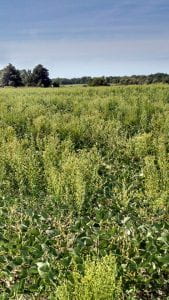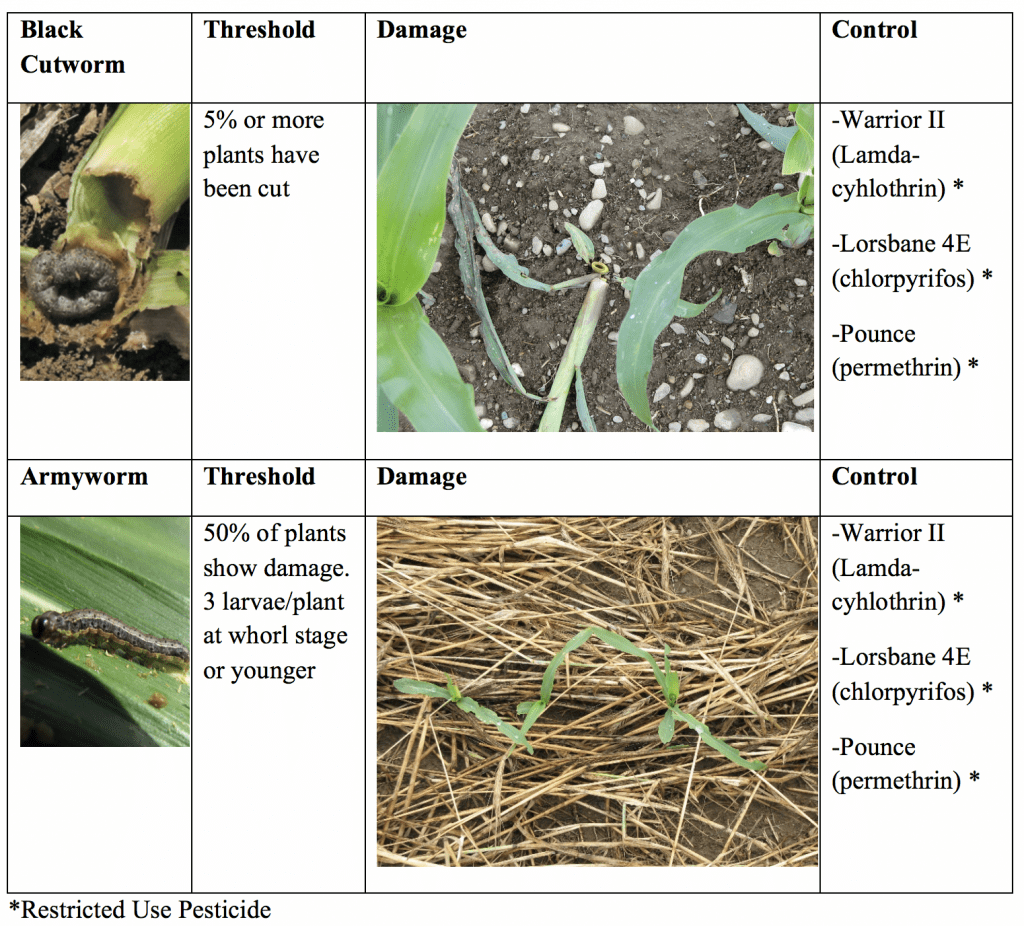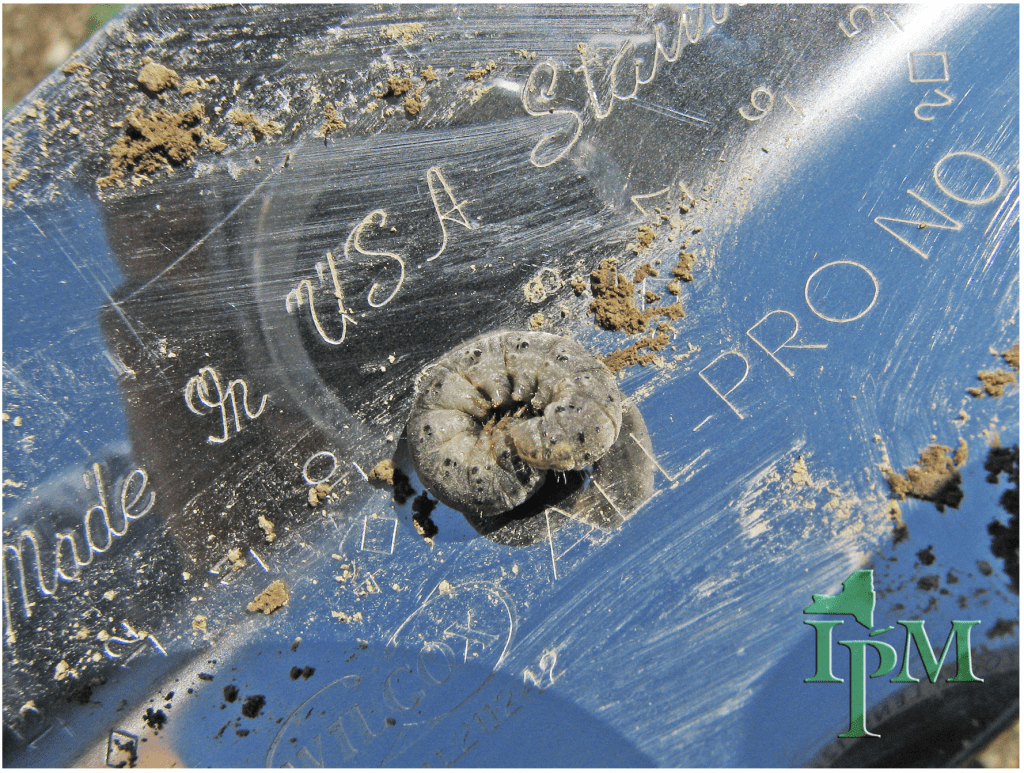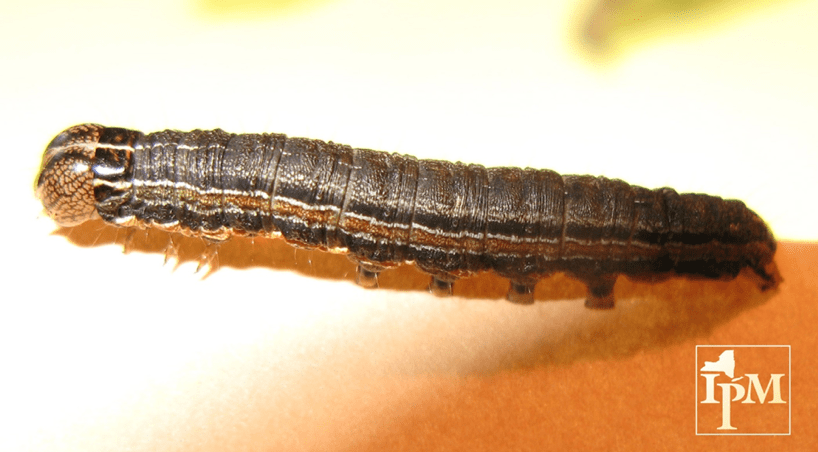Mike Hunter, CCE North Country Regional Ag Team

Glyphosate resistant and multiple resistant (Group 9 and Group2) marestail is spreading across New York State and may already be on your farm. If you don’t have it on your farm today the chances are you will at some point in the future. The presence of herbicide resistant marestail, tall waterhemp and palmer amaranth in New York is changing the way we manage weeds. We need to use burndown herbicide programs with more than one effective site of action to delay the development of resistant weeds and provide the best control. The use of glyphosate alone should no longer be considered a viable burndown herbicide program.
In no-till, strip-till and very minimum till (i.e. one pass with a vertical tillage tool) situations burndown herbicides will be necessary to control emerged weeds prior to planting. Marestail can be either a summer annual or winter annual. The winter annual marestail rosettes are present right now and as it warms up these will begin to bolt and grow tall quickly. Once resistant marestail gets any taller than 6 inches it becomes very difficult to control.
Xtend, Enlist and Liberty Link traited soybeans are the choices that allow for effective postemergence control of multiple resistant marestail. In Roundup Ready or conventional soybean fields we have no effective herbicides for the postemergent control of multiple resistant marestail.
Burndown herbicide programs for no till soybeans will include either glyphosate, glufosinate or paraquat tank mixed with 2,4-D and/or Sharpen (saflufenacil). The addition of metribuzin or Valor SX (flumioxazin) or both to the burndown program will provide residual control of marestail.
If dandelions are also a problem in the field, consider using one of the listed programs that include 2,4-D ester. Don’t substitute 2,4-D amine formulations for the ester formulation. Apply 1 pint per acre of 2,4-D ester (4 lb gal formulations) to keep the preplant interval to 7 days, rates higher than that will lengthen the planting interval.
If using a burndown option that includes Sharpen, apply 1 oz/acre for no preplant restrictions (except for coarse soils with 2% or less organic matter where the preplant restriction is 30 days). If Sharpen (used at 1 oz/ac) is included in the burndown program and tank mixed with a flumioxazin product the preplant restrictions will be a minimum of 14 days in no till (except for coarse soils with 2% or less organic matter where the preplant restriction is 30 days) and 30 days in conventional till regardless of the soil texture and organic matter.
Here are choices that include more than one effective site of action for the control of resistant marestail in soybeans:
-
- Sharpen (1 oz) + glyphosate + metribuzin
- 2,4-D ester (1 pint) + glyphosate + metribuzin (7 days prior to planting)
- Can include a flumioxazin product (Valor SX, Valor XLT, Envive, Surveil)
- Or a premix containing metribuzin + flumioxazin (Trivence WDG or Panther Pro)
- 2,4-D ester (1 pint) + Sharpen (1 oz) + glyphosate + metribuzin (7 days prior to planting)
- Sharpen (1 oz) + glufosinate (Liberty)
- Sharpen (1 oz) + glufosinate + metribuzin
- 2,4-D ester (1 pint) + Sharpen (1 oz) + glufosinate + metribuzin (7 days prior to planting)
- paraquat (Gramoxone) + metribuzin
- 2,4-D ester (1 pint) + paraquat (Gramoxone) + metribuzin (7 days prior to planting)
- Sharpen (1 oz) + glyphosate + dicamba (must use one of these: XtendiMax, Engenia, FeXapan, Tavium (dicamba + s-metolachlor)) In Roundup Ready 2 Xtend (dicamba tolerant) soybeans only
- Sharpen (1oz) + Enlist One + glyphosate (or Enlist Duo (2,4-D choline + glyphosate)) In Enlist soybeans only
Here are choices that include only one effective site of action for the control of resistant marestail in soybean:
-
- 2,4-D ester (1 pint) + glyphosate (7 days prior to planting)
- Sharpen (1 oz) + glyphosate
- glyphosate + dicamba (must use one of these: XtendiMax, Engenia, FeXapan, Tavium (dicamba + s-metolachlor)) In Roundup Ready 2 Xtend (dicamba tolerant) soybeans only
- Enlist One + glyphosate or Enlist Duo In Enlist soybeans only
Resistant tall waterhemp has been found in 12 counties in NYS. If resistant tall waterhemp is present on your farm the herbicide program will be slightly different from a multiple resistant marestail program. It is highly unlikely that a one pass, preemergence herbicide application will provide adequate control of resistant tall waterhemp in soybeans. It will require a two pass (Pre and Post) herbicide program to provide season long control to minimize the spread of seed.
If Roundup Ready or conventional soybeans are planted, make a preemergence application of a Group 15 herbicide (Dual II Magnum, Warrant, Outlook, EverpreX) + metribuzin and consider including flumioxazin in this tank mix as well. The postemergence herbicide choices will be limited to Reflex, Flexstar, Flexstar GT (if RR soybeans), Prefix (Dual Magnum + Reflex) or Warrant Ultra (Warrant + Reflex). If necessary, a late postemergence rescue treatment of Cobra can be used.
If Xtend, Enlist or Liberty Link traited soybeans are planted, make a preemergence application of a Group 15 herbicide (Dual II Magnum, Warrant, Outlook, EverpreX) + metribuzin and consider including flumioxazin in this tank mix as well. In Roundup Ready 2 Xtend (dicamba tolerant) soybeans apply a postemergence application of XtendiMax, Engenia, FeXapan, Tavium. If Enlist soybeans are planted, apply Enlist or Enlist Duo. If Liberty Link soybeans are planted apply Liberty.
Always read and follow label directions prior to using any herbicide. If you have any questions or would like more information regarding burndown herbicide programs for soybeans contact your local Cornell Cooperative Extension office.




